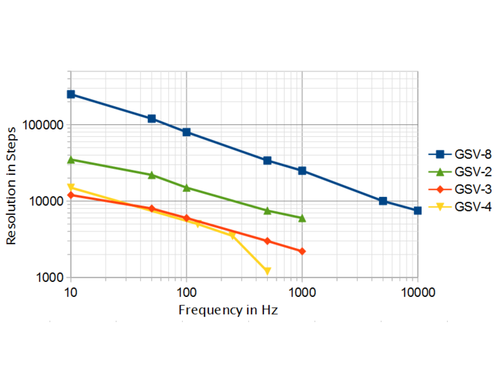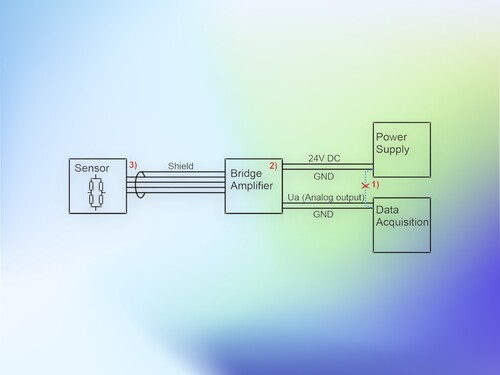Resolution of measuring amplifiers / sensors
The “resolution” of a measuring system is understood to be the smallest “display step” of a measuring system that can be read. In the case of measuring amplifiers with a digital interface, the “resolution of the analog/digital converter is understood first. For example, a 16-bit A/D converter has a resolution of 1/216 digits = 1/ 65536 digits or a 24-bit A/D converter has a resolution of 1/224 digits = 1/ 16,777,216 digits.
In fact, the resolution that can be used by the user of a measuring system is limited by the noise of the sensor and the noise of the electronic components. The noise amplitude of the analogue circuits before analogue-to-digital conversion is several orders of magnitude higher than the noise due to quantization deviation during A/D conversion with 16 or 24 bits. With a 10 bit or 12 bit, the quantization noise would exceed the analogue noise of the electronics.


